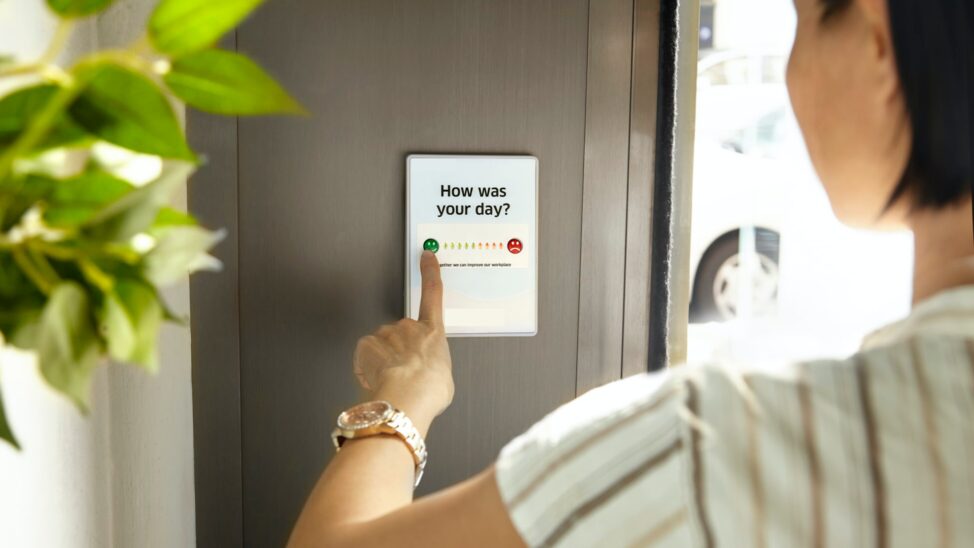Maintaining Engagement in Lockdown webisode: Key takeaways

The conversion to remote working as a result of the coronavirus pandemic has had a huge impact on the way employees engage both internally and externally.
As part of the new and virtual CC Live series, Perfect Circle shared insights on how this new normal way of working has had to evolve to keep employees engaged and ensure productivity is maintained, while also reassuring clients and stakeholders.
The virtual event took place on Friday, 15 May and featured conversations with industry leaders, followed by a live Q&A session.
Here, we share the key takeaways from the event. You can also watch the episode in full below.
Our speakers
- Elizabeth Hardwick-Smith, director of HR and training at Pick Everard, discussed how she is managing employee engagement during this period of lockdown and how to accurately measure levels of staff engagement.
- Jon Enever, Perfect Circle chair and chief client officer at Gleeds, spoke about how the industry can maintain service levels during this period of remote working.
- Richard Whitehead, Perfect Circle senior management board representative and managing director at AECOM Building + Places, talked about the leadership skills that these unprecedented times require.
- Krish Raichura, category lead for consultancy at Scape Group, discussed the importance of suppliers managing their people in order to fulfil client expectations.
Working in 2020
Richard said: “Leadership now is very different to when I first started my career. It’s about inspiring and engaging people, and getting people to want to follow you, rather than feel like they have to follow you.
"The big change is around the choice that people have now. Our people choose to work for us, whereas you go back to my father’s generation, you got a job, said ‘thank you’, and you got on with it.
“I see a lot more focus on wellbeing too and getting the work/life balance right. We have a programme called Freedom to Grow, which allows our people to work in ways that suit them and bring their best selves to work. They can choose the way they work and the hours in the day they work.”
Elizabeth added: “Workers today want something completely different. They want to feel like their work has got real purpose, that they’re being listened to and they feel really connected.
"There’s a much bigger demand for work/life blend, rather than balance. They want to know they’ve got great career aspirations and they want to have a career that’s really varied and exciting.”

The drivers of engagement
Richard said: “People want to work for a company that acts with integrity, is diverse and ethical, and environmentally responsible.
“The drivers of engagement are fairly consistent across cultures, locations, different organisations and people. There are the basic drivers, such as that you need the right tools for the job and you need to be adequately compensated.
"But then enhanced engagement comes from feeling like you are a part of something, like you’ve got a voice and you can contribute your point of view. It’s also important that you’re respected and you get recognised for the effort you put in.”
Building trust with employees
Jon said: “The big question is always going to be around trust. People probably aren’t going to be able to work 9-5 [at the moment – because of the lockdown] as they may have children they’re needing to home-school.
"From an employer’s perspective, I think the key is to be supportive, to recognise those challenges and trust people to be able to get on and do their job.”
The benefits of having an engaged workforce
Elizabeth said: “The business case for having an engaged workforce is really compelling. You’ll see higher productivity and better retention rates, while absenteeism will go down and productivity increase. And all those things are really great for the bottom line.”

Creating an engagement strategy
Elizabeth said: “There’s lots of things that organisations can do.
- An accessible, visible and inspiring leadership team
- Regular one to ones with managers for feedback and to set smart objectives
- Rewards
- Whether there’s a sense of fun and feel good about an employer.
“How well people feel supported, how they’re getting on with their peers and whether their wellbeing is being looked after also matters.
"All those different factors should ultimately be components of a very well thought through employee engagement strategy.
“The organisations that have genuine best practice are those that go the extra mile themselves and really commit to employee engagement. So, they’ve got the basics right already and they’re coming up with some really innovative ideas.
"For example, the leadership team aren’t just visible and approachable, they’re actually experienced in what it’s like to be one of their employees – they’re doing a day in the life of.”
Making sure you’re measuring the engagement
Elizabeth said: “You can measure it directly through an internal survey. I really like it when people dig deeper and look at the data in a purposeful way.
"They pull together focus groups or do interviews with people once they’ve done a practice/company-wide survey. They really want to get under the skin of what those results look like or what they mean.
“And then it’s about building those action plans, implementing them, and measuring them again. It’s a constant cycle, it’s always ongoing.”

Working with clients and suppliers
Krish said: “Solutions can only be developed when both partners are working together. This includes jointly identifying any specific risks to our clients, and developing focused action plans for digital solutions, such as for contracts to be executed remotely.”
Krish also said it is important to do research to understand what clients’ key drivers and their critical success factors are. He said: “But, most importantly, just managing expectations goes a long way.”
Jon added: “Clients are in a very difficult position, as well as consultants and our contracting framework partners.
"So, it’s important to let them know that businesses like Perfect Circle are still around, still operating at full capacity, and still ensuring we’re sticking true to the pledges and the contractual arrangements we’ve got set up.
“As the time period has moved on, it’s now very much the case of making sure that clients understand we’ve got that expertise, we’re there, we know how to look after their best interests and support them in their differing requirements as things will be changing in their businesses.”
Learning from the lockdown experience
Jon said: “I think it’s inevitable there has to be change. As an industry, we’ve seen that we can be more efficient, and we can spend less time travelling.
“And you see the knock-on effects of allowing people to spend more time with their family and loved ones. If we can get that work/life balance even better as a result of coming out of this situation and begin to be more tolerant about people’s priorities, I think that’s a wonderful achievement for our industry.”
Richard added: “I think we’ll see a lot more digital tools in the future. We’ve proved we can work from home and deliver effectively for our clients, so why make everyone come into the office every day?”


